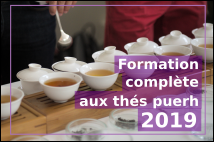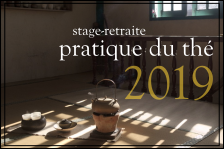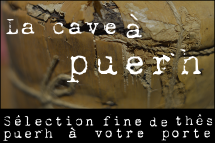For many the Gung-Fu Cha, where Chinese art of brewing tea with balance and discernment, goes along with a Yixing teapot, these small teapots which we attribute the ability to magnify the tea infuse it.
The teapot is not the only utensil to take place at the center of Gung-Fu Cha, and another way to brew the tea in this way are: The Gaiwan (盖碗), also sometimes called zhong.


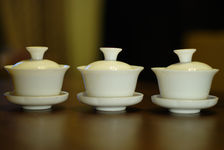


- 1. Gaiwan with lid and saucer
- 2. Gaiwan filled with tea leaves
- 3. Gaiwan porcelain
- 4. Gaiwan glass
- 5. Gaiwan clay
Denigrated by some who swear by the Yixing teapot Gaiwan is a valuable and indispensable that has no equal in many situations. Literally in Chinese "bowl with a lid" on Gaiwan can be used in different ways. If some people actually use as a bowl to drink directly, especially in Sichuan where it is the tradition, the Gaiwan can also put the teapot in the practice of Gung-Fu Cha.

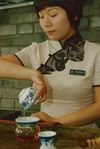
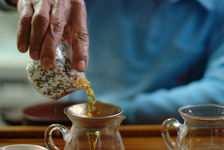
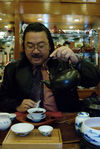
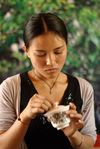
- 1. Gaiwan Gung Fu Cha in Kunming, Yunnan
- 2. Gaiwan Gung Fu Cha in a famous teahouse in Chengdu, Sichuan
- 3. Shi Hai Deng wielding Gaiwan in Taiwan
- 4. Gaiwan Gung Fu with Cha Yip Wai Man (Hong Kong)
- 5. Gaiwan Gung Fu Cha in the mountains of Yunnan (Jinuo Shan)
Usually made of nonporous materials such as porcelain or glass, Gaiwan unlike the teapot from Yixing clay, not created with the teas she meets and can thus either infuse all types of teas, raw and puerh (Pu Er tea) fermented, Wulong teas, green teas, black or white.
This not only lets you use the same utensils for different teas, where it is generally preferred to dedicate a pot of tea per family, but it also gives the form of neutrality Gaiwan a particularly suitable example for a tea tasting as the is not known, or compare teas. If indeed a suitable Yixing tea given may tend to magnify the Gaiwan will address the latter a kind of neutrality for judging the tea, which explains in particular that, in China, most of the tea merchants are honest taste their products in gaiwans.
The Gaiwan, with a large aperture, is also particularly pleasant to watch the tea leaves and their transformation over the infusions. Finally, it is ideal for the tea to brew tea or subtle, that do not support the infusion of Yixing clay, or pure brew tea leaves especially deployed, such as Maocha, impossible to into a teapot.
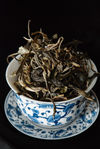
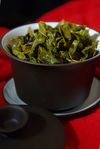
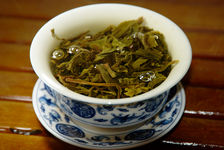
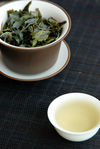
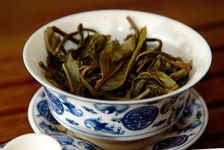
- 1. Gaiwan filled Maocha
- 2. Infused leaves in a Gaiwan
- 3. Infusion in Gaiwan
- 5. Infused leaves in a Gaiwan
Without going into details (I would devote an entire article to this object, its origin, etc.) it is worth noting that there are also large differences from one to another Gaiwan, particularly in terms of material (glass , earth, porcelain), the capacity and shape (more or less flared, more or less thick). These shades have a good influence on the tea infuse them (up to temperature more or less rapid and intense variation of the contact surface to air tea, etc. ...).
But most of the differences in formation of a Gaiwan to another it is mainly in the use we make of Gaiwan and the art of manipulating the object, we get different interpretations and more or less successful tea we put in, and it is precisely the issue of Gung Fu. The Gaiwan, behind its minimal aspects, is indeed a particularly malleable and can actually interpret tea with endless variations.
Let's move to table a small introduction to the basic practice of Gung-Fu with a Gaiwan, as this practice in Yunnan. Of course the Gung-Fu, which recall the art is a vast and complex that comes with practice and perseverance, is not a static science. There are so many variations involving in particular the Gaiwan differently, and this introduction, reflects only one approach.
Wash (scalding) equipment
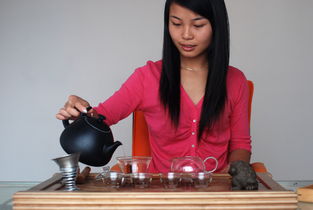
|
Prepare and place all materials on the tea table (if you use a tea table).
Boil the water.
Puerh of tea infuses usually closer to 100 degrees, so it is best to have a kettle handy to have permanent water actually boiling.
If your kettle allows, set the order to conserve water as close to 100 °.
|
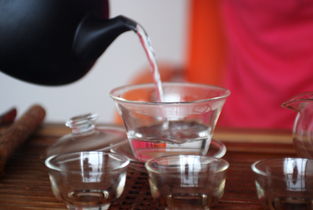
|
Pour boiling water into the Gaiwan (empty) to the brim.
Not only that "washing" the Gaiwan, but also makes the temperature.
If your Gaiwan is done in a matter supporting the wrong temperature shocks, it is advisable to start filling with water slightly warm, or warm it by passing rapidly through the escaping steam from the kettle to to prepare and prevent it from cracks in contact with boiling water.
|
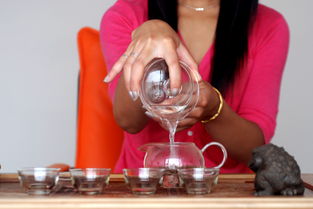
|
Close the Gaiwan.
Being filled to the brim, the end of the cover Gaiwan must dive under the water level, which makes the Gaiwan and closed airtight.
Hold the Gaiwan one hand, the thumb and middle finger diametrically opposed supporting bottom while the index that is resting on top of the lid.
Made this slightly rotate the lid with your index finger to form a gap that will allow water to flow.
Now rotate the whole pitcher and pour into the water in the Gaiwan.
The first few uses, it is possible that you are (sadly) surprised by the water temperature and Gaiwan itself.
Indeed, while the water boiling flows it is possible that it comes in contact with the fingers that support the bowl, or as steam of boiling water from escaping through the back and come lick palm of your hand.
These vivid sensations alert mind but will not, however, until the burning physics, you get used to use and it lends more attention soon.
|
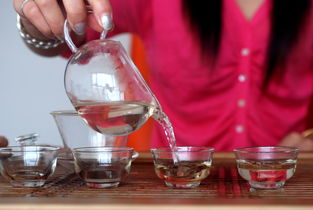
|
Now pour the boiling water to each cup from the pitcher.
|
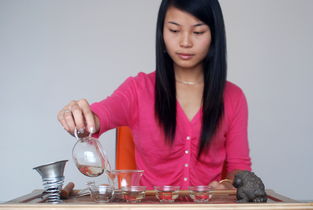
|
You can spill over, but it is not required.
You can mark your movement breaks in each cup or pour water in one gulp as you see fit.
|
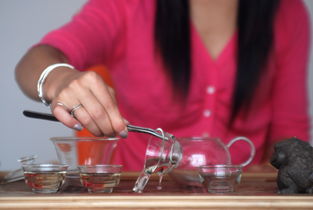
|
Successively enter each cup using the clamp (or directly with your fingers if you do not use pliers) ...
... and invert the contents by a small rotary motion.
You can like the pictures make their content directly on the tea table at the location of the cup, but you can also (as I usually do) pour the contents of each cup into the one next door thereby making overflow.
Finally you can on your own cups pour the contents into a bowl for this purpose (especially if you do not use tea table) or tea on your pet (right in photo) if you have one .
|
tea extract and Present
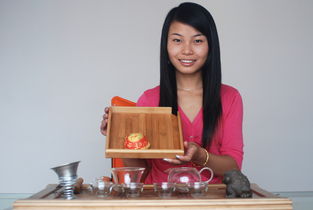
|
Introduce the tea that you brewed your guests.
|
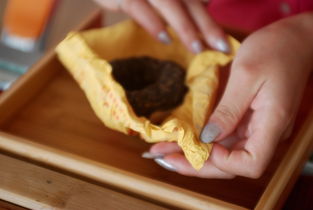
|
Carefully open the packaging to the wafer or tuo.
|
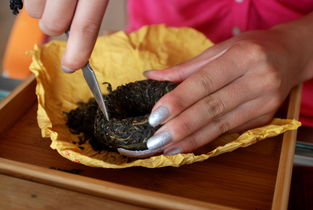
|
A fragment of tea extract with the knife or peak.
Rub salt into the cake or tuo trying as much as possible not to damage the leaves, once the knife pressed gently bend a lever movement to extract a "block" of tea.
Too damaged leaves might indeed, beyond the aesthetic dimension of the sheet when it deployed in the water, affect the taste of tea, for example by making more bitter.
(See this article if you want to learn more about how to extract from his tea a wafer or a tuo)
|
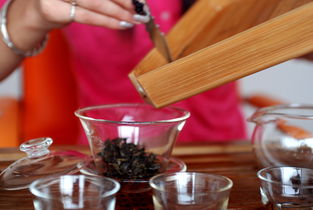
|
Pour the tea leaves in the Gaiwan.
The amount is based on tea, age, size of the teapot and tastes ... So do the tests ...
Broadly there are typically for slabs and brick 1/5 volume of Gaiwan, one can tuos and more for less (between 1/3 and 1/4) for loose teas. After we adapt as a function of age, we tend to make significantly fewer leaves and a young one can puerh (Pu Er tea) for puerh (Pu Er tea) old ...
Again this is a balancing act, practice, and the best thing to do is to try to trust his eyes and his palace. I do not recommend and follow to the letter "cooking recipes" written on the packaging such teas are recommended by friends, and experience for yourself the different rendering of a tea given in relation to the amount of infused leaves.
Just as I also recommend the stopwatch I also highly recommend the use of electronic balance. The Gung-Fu is something sensible and not a scientist and the best way to learn is to advance in this art is its sensitivity to shape and integrate smoothly (unconsciously) the relationship between proportions, times and tastes.
|
Wash Tea
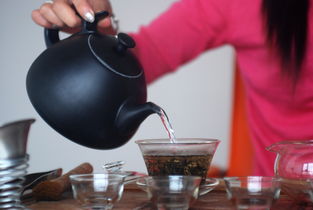
|
Refill completely Gaiwan boiling water.
For puerh (Pu Er tea) (or oolong) water should generally be as hot as possible.
|
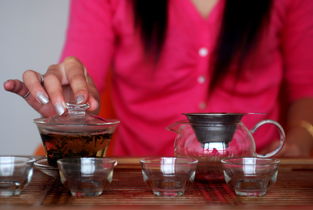
|
Close the Gaiwan taking care that the cover dips below the water surface and trying to minimize the air in the Gaiwan. Help you why a small circular motion when you close the lid.
Let the tea steep for a short time (few seconds!).
Wash time is adapted according to the tea, but usually two or three seconds are sufficient.
Some teas, old or very compressed instance, may require more time to flush slightly higher.
|
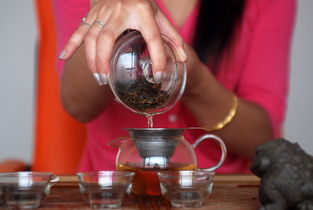
|
Pour the tea into the pitcher, as you had done previously, that you have previously installed a filter.
(Again this is very hot, but you'll soon be more careful).
|
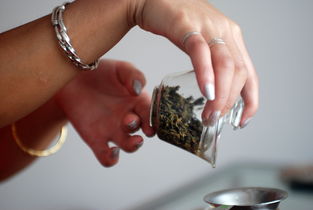
|
The a priori Gaiwan stands with both hands especially for women, for the sake of balance of graceful movement.
Men, in a more minimal and virile, the generally held in a single hand, just taking care to retain the lid of a finger.
|
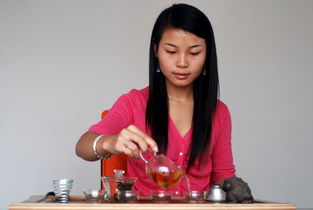
|
Pour the tea into successively all the cups.
|
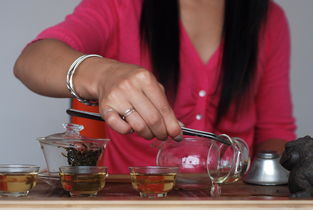
|
Successively enter each cup using the clamp and again spill their contents by a small rotary movement.
Again you are free to make that content wherever you want, directly on the table, a cup in the other, on the teapot or tea on the animal. This will change the color gradually as and months and years based on teas that you "give" ...
|
To feel
tea
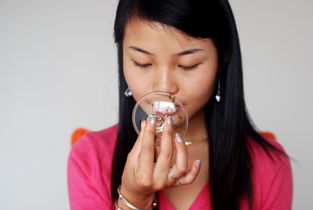
|
You can then feel, and /or felt the tea, either using an elongated cup for this purpose (which is most suitable wulong), night by turning one of the cups you just empty (thus empty) or by feeling the back of the cover Gaiwan after I had left a few seconds to aerate.
This not only contributes to the tasting, and can appreciate the fragrance of tea, but it also prepares the way the character of the tea and allows to better appreciate the flavors to come.
|
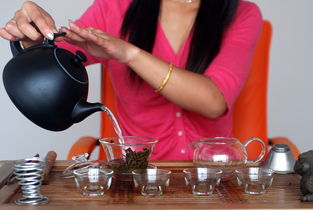
|
The puerh (Pu Er tea) washes usually 2 times (unlike oolong or green tea for which a single washing is usually done).
Therefore reproduce the previous steps a second time.
If you make tea with friends I suggest you wash the tea once, pour it into cups, empty, and then reproduce it all again because it is more graceful, but also longer and is therefore better condition following the tasting.
If you are alone or in a hurry you can also pour the contents of two successively Gaiwan in the pitcher (which now contains the contents of two washes at a time) and then in reverse once one of the cups, which is simpler and Fast.
|
Brew and serve tea
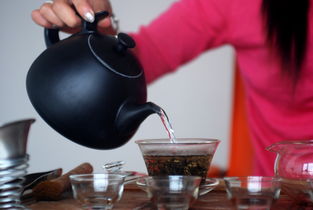
|
Refill your Gaiwan boiling water.
Let steep a few minutes and if your glass is Gaiwan take the opportunity to admire the liquor tingle and leaves unfold.
A new period is to be adapted according to each tea, the number of infusion, the amount of tea you put into the teapot, the teapot itself and your own tastes.
My advice for a puerh (Pu Er tea) that you do not start with an infusion of two or three seconds, then adjust according to your felt:
If you brew seemed too light, slightly lengthen the duration of the next infusion. If instead the infusion you seemed too strong, the next brew slightly shorter.
It is also necessary after a few infusions gradually lengthening the duration of infusion.
Again do not be too uptight, avoid relying too much time passes, follow your instincts, it will come gradually.
|
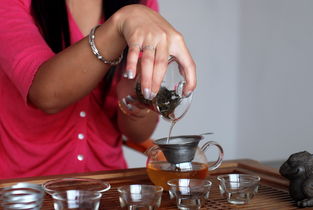
|
Once the infusion done, pour the tea into the pitcher on which you installed a filter.
It is then polished to provide liquor to his guests that he can judge its color and its transparency.
|
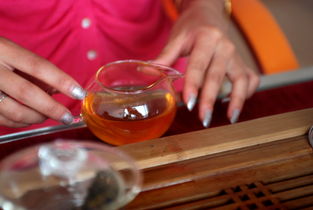
|
Wipe the bottom of the pitcher on a small towel.
|
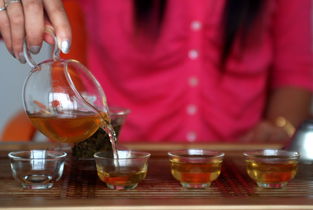
|
Pour the tea into the different cups.
|
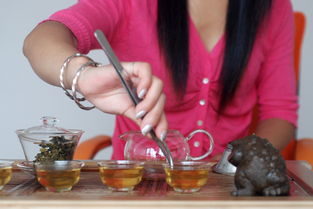
|
As before if there is tea in the pitcher you can make the choice on the teapot or tea on your pet, or keep it in the pitcher for the first helpings that will empty cups.
|
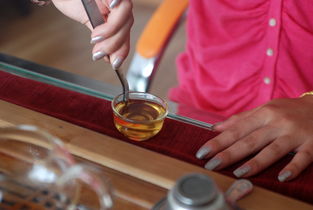
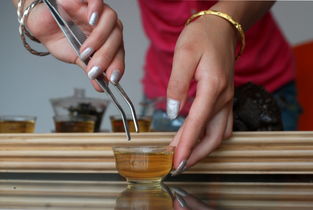
|
As before if there is tea in the pitcher you can make the choice on the teapot or tea on your pet, or keep it in the pitcher for the first helpings that will empty cups.
|
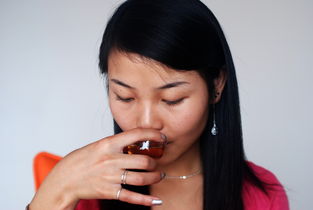
|
Enjoy the show.
You can, like wine, to suck some air while drinking tea and pass it around a bit in your mouth to bring out the flavor.
Between sips of tea open your mouth, inhale deeply through this one to bring air into your throat and lungs, then exhale slowly through your nose to circulate the aroma of tea in the nasal cavity.
|
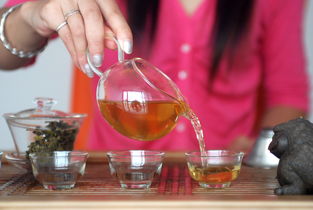
|
You can perform a number of teas, tea varies, quality and quantity of tea that you put into the teapot.
(Stop when you feel you just as tea does not have enough flavor).
When the tea is good and it is brewed you will notice nuances to each infusion, the slippage between the flavors, sensations that appear in echoes of other sensations, etc. ...
You fill the cups on the tea table that during the first infusion.
Then, just brew the tea as before, wipe the bottom of the jug and fill the cups directly to your guests where they are.
When it is not you who made the tea, you can, while they serve you a cup, tapping the table discreetly using three fingers of your hand grouped by tradition and in gratitude for those who (re) is your cup.
|
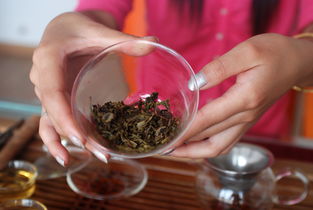
|
Once the session is finished you can present your guests tea leaves you just drink, or in the cup or by pouring them into a bowl and turning it.
|
Wash the material
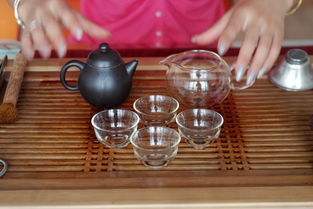
|
Once the session ended tea you can wash the equipment with class, as follows:
Place all materials on the table.
Boil the water.
|
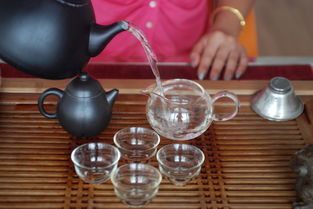
|
First pour boiling water into the pitcher.
|
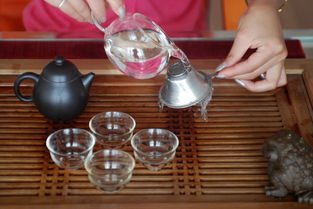
|
Wash the filter by pouring water from the pitcher.
You can either hold the filter with one hand, or put it down, turned, poised between two cups.
(As a hat)
|
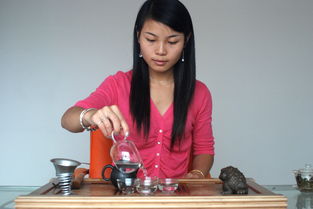
|
Pour water in all the cups.
|
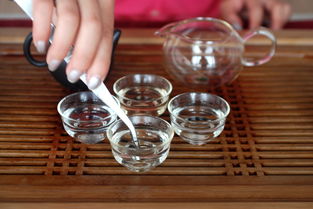
|
Enter a cup.
|
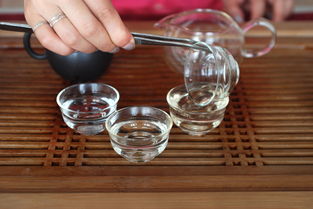
|
Insert it vertically into another cup as in the photo until she hits bottom.
You can let go, she must stand by themselves vertically.
Do it several times then turn like a wheel, catching it in turn with the pliers, so as to wash the entire cup.
(Each time it is another cup serving, which dip into the water).
|
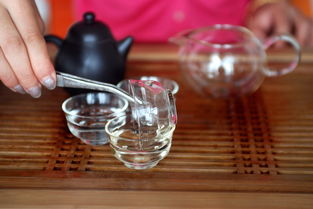
|
Do the same thing for each cup.
|
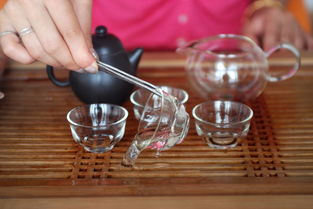
|
Spill the contents of the last cup.
|
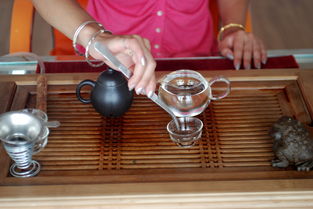
|
Discard or store the cups.
|
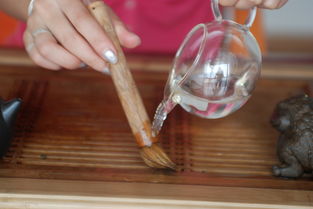
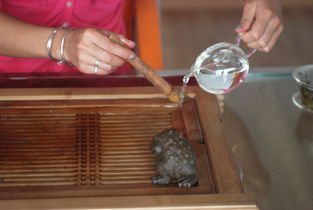
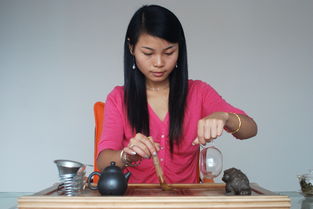
|
Finally wash the table with the brush and boiling water.
|
 This page is not a real translation but just an automatic translation generated by computer of the original article, written in French language! Its not good... but better than nothing!
This page is not a real translation but just an automatic translation generated by computer of the original article, written in French language! Its not good... but better than nothing!




















